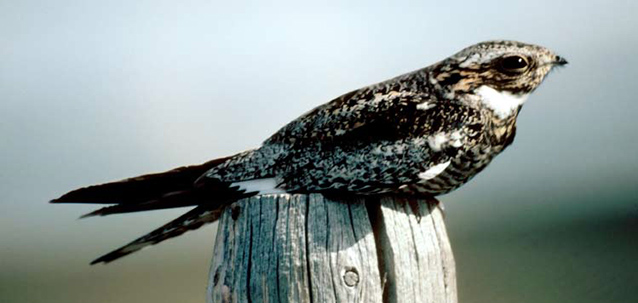Several of the major threats and concerns regarding birds within the Southwest include: climate change, invasive exotic plants, land use (including development, water management, and livestock grazing), altered fire regimes, and disease. Examples of additional threats include visitor use and air pollution.
Climate Change

Photo by Rob Bennetts
Climate change is an emerging threat that may affect bird communities in a variety of ways. The latitudinal range for some species of birds is already shifting northward (in the northern hemisphere), and additional shifts are likely (Price and Root 2005). Further, unless all ecosystem components shift in concert, habitats are likely to be disrupted (Burkett et al. 2005), resulting in changes in abundance and loss of some species (Root and Schneider 2002, Price and Root 2005). Climate change may also be leading to a change in the timing of migration (Parmesan and Yohe 2003). Increases in temperature and precipitation can further lead to changes in vegetation and insect abundance (Root and Schneider 2002), which in turn may affect several life history constraints (Root 1988), as well as the reproductive strategies of birds (e.g., tradeoffs between egg size and clutch size [Jarvinen 1994]).
Invasive Exotic Plants
Invasive exotic plants can cause dramatic changes in bird communities. For instance, semi-desert grasslands throughout the Southwest region are being affected by the encroachment of mesquite and other shrubs into areas once dominated by perennial grasses. Grassland-obligate birds have responded predictably to this change in structure with declines in local populations. Similarly, shrub-steppe communities (e.g., dominated by sagebrush [Artemisia spp.]) are vulnerable to invasion by non-native species such as cheatgrass (Bromus tectorum). Declines in habitat quality and changes in fire regimes have lead to invasive exotic plant species gaining a competitive advantage over native species. Such vegetation changes can cause shifts in bird communities from obligates of a given habitat type to generalists and/or to obligates of the altered habitat type. Conversion of habitat to agricultural uses also can decrease the resiliency of an area to invasions. While grazing and other agricultural practices are restricted within boundaries of national parks, changes outside jurisdictional boundaries can have significant effects on migratory species, including many birds that are of interest for monitoring.
Land Use
Land-use changes within and around parks can lead to the direct loss or alteration of habitat. It can also result in habitat fragmentation, which can decrease the overall quantity or quality of habitat. Land-use change may further impact migratory routes and timing. Habitat for some species of concern in the Southwest has been fragmented and degraded by urban growth. Some of the resulting effects include: vegetation change due to groundwater withdrawal and urban development; and replacement of historic native species with those that are either non-native or adapted to the agricultural, commercial, or residential environments. Parks located along the U.S.-Mexican border may also suffer impacts associated with illegal immigration, smuggling, and related law-enforcement activities. An additional example of land-use impacts includes changes in vegetation structure in riparian areas due to shifts in flooding, stream width, and accretion of sediments (Scott et al. 2003).
Livestock grazing may influence bird community composition by disturbing the vegetation or by altering vegetation structure (Mosconi and Hutto 1981, Holmes and Johnson 2007). Grazing can lead to the reduction of native plants and changes in plant community composition, structure, and distribution (Holmes and Johnson 2007). Grazing in riparian areas can affect water quality, increase erosion and sedimentation, reduce vegetative cover, and promote invasive plant establishment. Such modifications may lead to avian responses such as reduced breeding productivity, changes in species distribution and abundance, and changes in bird community composition and dynamics (Holmes and Johnson 2007).
Prepared by Patty Valentine Darby, Southern Plains Network Inventory and Monitoring Program, 2009.
Part of a series of articles titled Birds of the American Southwest.
Last updated: February 3, 2015
